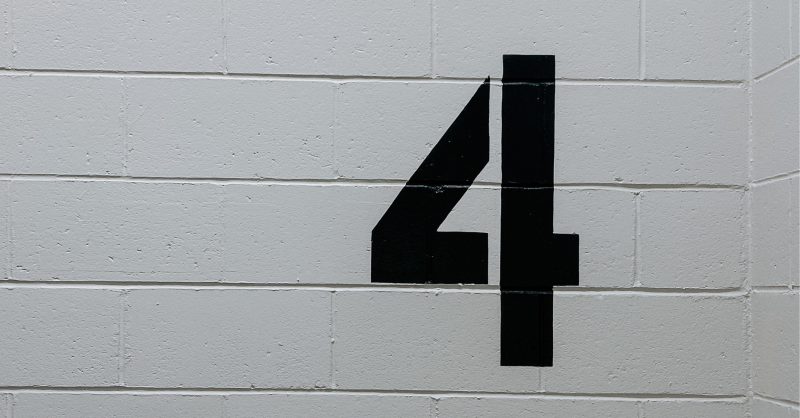It’s fascinating to view ancient storytellers through a modern lens, and Aesop’s Fables, are one such example of stories that have survived through to today.
Most people believe Aesop wrote the stories attributed to him sometime between 620 and 564 BCE, though it’s unclear exactly who Aesop was. Despite the uncertainty, for centuries, the stories were for adults covering various themes, though they are more widely aimed at children today.
Our modern view is shaped by an early printed version of the stories written in 1484. Recent collections of the stories sometimes attributed to Aesop encompass over 350 fables from major Greek and Latin sources.
A fable is a work of fiction that points to a truth that might last centuries through re-interpretation and updated meaning. So what can Aesop teach us about investing in the 21st Century?
The Oak and the Reeds
This story tells of the great oak tree that proudly points fun at the reeds as they are blown in the breeze.
The slightest breeze that ruffles the surface of the water makes you bow your heads, while I, the mighty Oak, stand upright and firm before the howling tempest.”
The reeds reply that the great oak should not worry about them, as they bow so that they do not break in the wind. The oak, they say, should worry about what is coming. As they spoke, a great hurricane fells the great tree, torn up by the roots to lie beside the reeds.
Better to yield when it is folly to resist, than to resist stubbornly and be destroyed.
Investing for the long term is to anticipate the coming of the “hurricanes”, cyclical events that can wipe out investors that hold single stocks. Better to hold a diverse portfolio and be subject to smaller increases and decreases than be persuaded to go all-in on single stocks. When the unexpected financial crash comes, those that are diversified between assets are more able to weather the storm.
The Wild Boar and the Fox
In this fable, a fox mocks a boar that sharpened its tusks on a nearby tree despite no obvious enemy, “There isn’t any danger I can see”, says the fox.
“True enough,” replied the Boar, “but when danger does come there will not be time for such work as this.
The story points out that preparedness for war, in the case of the boar, preparing for a fight is the best guarantee for peace.
When we diversify our portfolios, we prepare for the inevitable rising and falling that occurs between asset classes. When a significant drawdown or drop in the stock markets occur, it is already too late.
The Heron
A heron walking along the banks of a small river at dawn was proving hard to please one morning.
“No small fry for me,” he said. “Such scanty fare is not fit for a Heron. No indeed,” said the Heron. “I wouldn’t even trouble to open my beak for anything like that!”
As the sun rose, those little fishes left the shallow waters to the cool water in the middle, out of reach of the heron, leaving him hungry.
How often is it that we sit on the sidelines waiting for a perfect investment opportunity?It’s unlikely that you’ll know the right time to invest. Don’t take too long to make it, or you may be left out of the gains of a rising market.
The Fisherman and the Little Fish
A poor fisherman has seemingly lousy luck, catching only small fish one day. At the end of a hard day’s fishing, he catches one final tiny fish. This fish is desperate to be let back into the pond, and in one last attempt, makes a promise to the fisherman.
“When I am bigger, I shall make you a much better meal.”
Without hesitation, the fisherman places it in his basket and continues on his way, thinking to himself.
“How foolish I should be,” he said, “to throw you back. However small you may be, you are better than nothing at all.”
Risky assets must make the promise of big gains to tempt to into investing in them. It is much better to slowly accumulate smaller, less risky assets than risk wiping out on the promise of a larger return in the future.
The Sheep and the Pig
A shepherd discovers a pig in the meadow where his sheep are grazing. He quickly captures the pig, who squeals at the top of his voice. Had you been there, you might have thought that the shepherd cruelly hurt the pig. Despite all the noise, the shepherd takes the pig to the marketplace. The sheep are astonished and amused at the pig’s behaviour, asking him.
“What makes you squeal like that?” says one of the Sheep. “The Shepherd often catches and carries off one of us. But we should feel very much ashamed to make such a terrible fuss about it like you do.”
The pig replies
“That is all very well,” he says with a squeal and a frantic kick. “When he catches you, he is only after your wool. But he wants my bacon!
It’s easy to be brave like the sheep when there isn’t any danger. Investing is full of people like the sheep in this story, making active choices in how they choose to invest. Many, if not all, have already built up sizeable cushions of safe assets that allow them to take on risky investments without the fear of losses to their portfolio.
Aesop’s Fables, written 2500 years ago, undoubtedly provide insights into many human behaviours relevant to investing today. Try reading a few, and you’ll find many similarities between how they lived now and our lives today/



